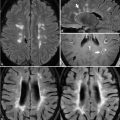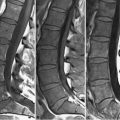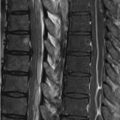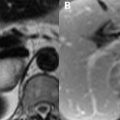97 Overview of MR Contrast Agents Extracellular gadolinium chelates are the most common contrast agents utilized in clinical MRI. Gadolinium is a heavy metal, extremely toxic in its elemental form. The safety basis of gadolinium-based contrast agents thus lies in the ability of a chelate to tightly bind the gadolinium ion, ensuring rapid, near complete excretion (see Chapter 98). The paramagnetic effect of the gadolinium ion reduces T1 and T2 of nearby mobile protons, changes manifest as increased and decreased SI on T1WI and T2WI, respectively. The latter effect—attributable to susceptibility or T2* effects—is used in first-pass perfusion imaging, but effects on tissue T1 are more commonly exploited clinically. In the CNS, BBB disruption allows passage of the extracellular chelate into pathologic tissue, resulting in lesion enhancement on T1WI, improving detection and lesion characterization. Illustrated in Fig. 97.1 is a lung cancer metastasis to the brain on (A) pre- and (B) postcontrast T1WI, with enhancement improving both conspicuity and definition of the lesion margin in this instance. On postcontrast images, vascular structures such as the choroid plexus and nasal turbinates normally enhance, allowing identification of contrast-enhanced scans. Similar principles allow depiction of vascular anatomy with contrast-enhanced MRA as in Chapters 99 through 101. Contrast-enhanced lesion detection in other regions of the body is reliant on metal chelate passage through leaky capillaries of granulation tissue or neoplastic lesions. The latter mechanism is demonstrated in Fig. 97.2, where the conspicuity of a squamous cell carcinoma metastasis is markedly improved from that on (A) precontrast T1WI with (B) contrast-enhanced FS T1WI. Talar and calcaneal enhancement in Fig. 97.2B
![]()
Stay updated, free articles. Join our Telegram channel

Full access? Get Clinical Tree








